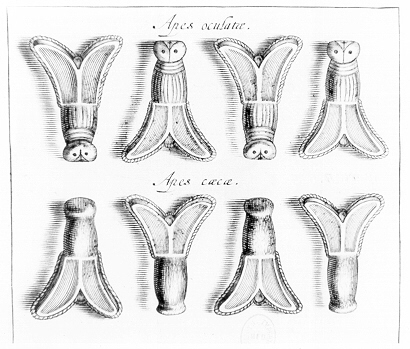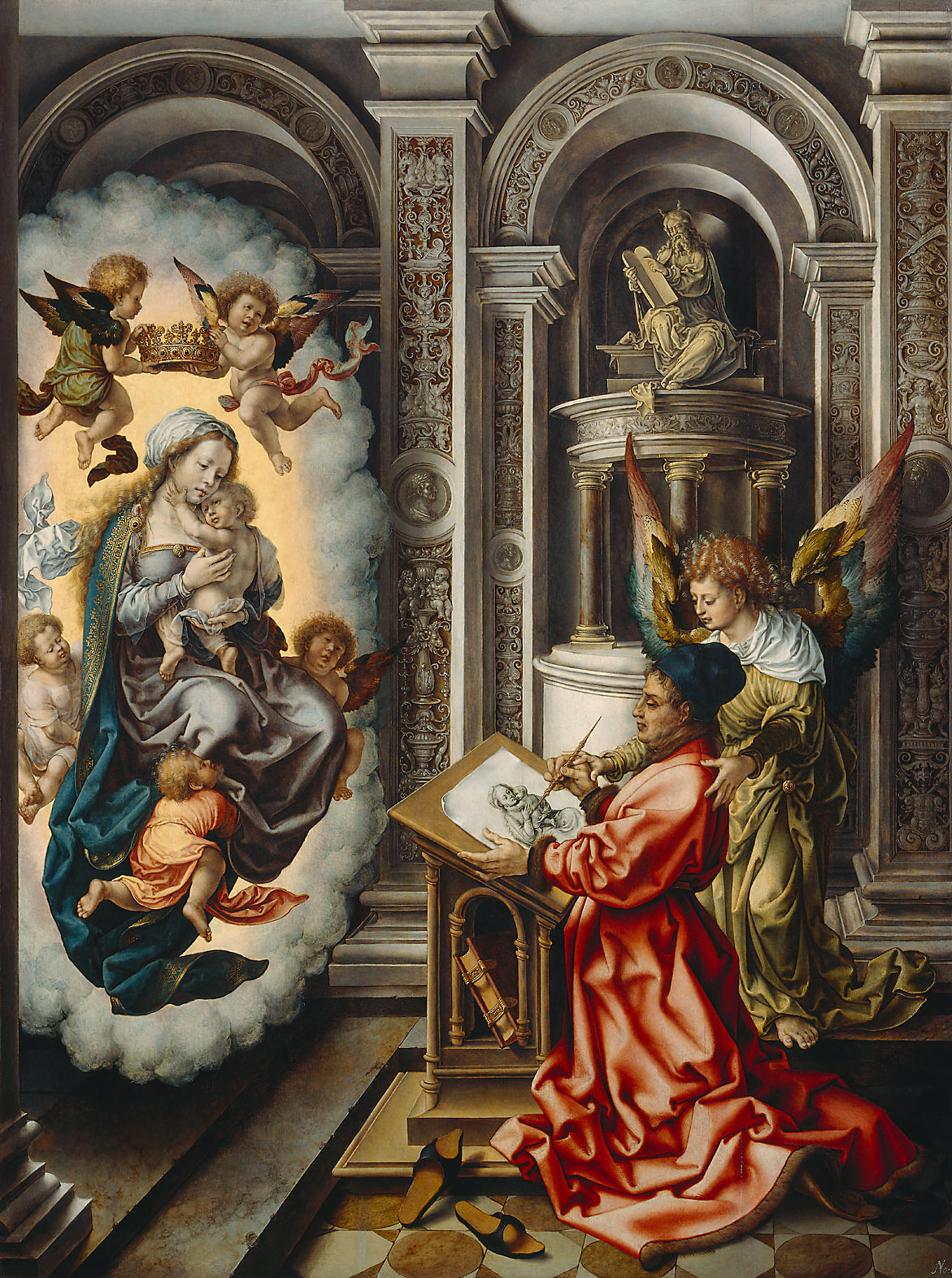|
Cornelius Galle The Younger
Cornelis Galle the Younger, Cornelius Galle or Cornelis Galle (I) (bapt. 23 February 1615, Antwerp – 18 October 1678, Antwerp) was a Flemish printmaker. He worked mainly on publications for the Plantin Press in Antwerp for which he engraved devotional prints and book illustrations.Cornelis Galle (II) at the Netherlands Institute for Art History Life Cornelis was born in Antwerp as the son of Anne van der Motte and Cornelis Galle the Elder, an engraver in Antwerp who had worked in Rubens' workshop and the Plantin Press. His grandfather[...More Info...] [...Related Items...] OR: [Wikipedia] [Google] [Baidu] |
Antwerp
Antwerp (; nl, Antwerpen ; french: Anvers ; es, Amberes) is the largest city in Belgium by area at and the capital of Antwerp Province in the Flemish Region. With a population of 520,504,Statistics Belgium; ''Loop van de bevolking per gemeente'' (Excel file) Population of all municipalities in Belgium, . Retrieved 1 November 2017. it is the most populous municipality in Belgium, and with a metropolitan population of around 1,200,000 people, it is the second-largest metrop ... [...More Info...] [...Related Items...] OR: [Wikipedia] [Google] [Baidu] |
Plantin Press
The Plantin Press at Antwerp was one of the focal centers of the fine printed book in the 16th century. History Christophe Plantin (c. 1520–1589) of Touraine was trained as a bookbinder. He fled from Paris where at least one printer had recently been burned at the stake for heresy, and went to Antwerp. There he bound books, became a citizen, and by 1555 began to print books, at first for distribution by other publishers. The city was already an established center of printing woodcuts, engravings and books. Plantin took on an assistant, Jan Moretus (Moerentorf), who read Latin and Greek and could write correspondence in several modern languages. He became Plantin's business manager, son-in-law and eventually his successor in the Plantin printing press. For over two hundred years the Plantin press had a monopoly, granted by the papacy, for the printing of liturgical formularies, including in Spain. In 1562, suspected of heresy, Plantin fled to France for two years. At an auction ... [...More Info...] [...Related Items...] OR: [Wikipedia] [Google] [Baidu] |
Netherlands Institute For Art History
The Netherlands Institute for Art History or RKD (Dutch: RKD-Nederlands Instituut voor Kunstgeschiedenis), previously Rijksbureau voor Kunsthistorische Documentatie (RKD), is located in The Hague and is home to the largest art history center in the world. The center specializes in documentation, archives, and books on Western art from the late Middle Ages until modern times. All of this is open to the public, and much of it has been digitized and is available on their website. The main goal of the bureau is to collect, categorize, and make art research available, most notably in the field of Dutch Masters. Via the available databases, the visitor can gain insight into archival evidence on the lives of many artists of past centuries. The library owns approximately 450,000 titles, of which ca. 150,000 are auction catalogs. There are ca. 3,000 magazines, of which 600 are currently running subscriptions. Though most of the text is in Dutch, the standard record format includes a lin ... [...More Info...] [...Related Items...] OR: [Wikipedia] [Google] [Baidu] |
Cornelis Galle The Elder
Cornelis Galle the Elder (1576 – 29 March 1650), a younger son of Philip Galle, was born at Antwerp in 1576, and was taught engraving by his father. He followed the example of his brother Theodoor in visiting Rome, where he resided for several years and acquired a correctness of design and a freedom of execution in which he greatly surpassed both his father and his brother. After engraving several plates at Rome, he returned to Antwerp, where he carried on the business of a printseller and engraved many plates after the works of his countrymen and his own designs. He became a master of the Antwerp Guild of St Luke in 1610. One of his pupils was Giovanni Florimi of Siena. Prior to his visit to Italy, he engraved some plates in the dry, stiff style of his father, of which the best known are: *A part of the plates of the ''Life of Christ''; after Marten de Vos *A set of plates of the ''Life of the Virgin Mary''; after Stradan *A set of plates of the ''Life of St. John the Ba ... [...More Info...] [...Related Items...] OR: [Wikipedia] [Google] [Baidu] |
Philip Galle
Philip (or Philips) Galle (1537 – March 1612) was a Dutch publisher, best known for publishing old master prints, which he also produced as designer and engraver. He is especially known for his reproductive engravings of paintings. Life Galle was born in Haarlem in the Netherlands, where he was a pupil of the humanist and engraver Dirck Volckertszoon Coornhert, Dirck Volkertsz. Coornhert. According to the RKD, he married Catharina van Rollant on 9 June 1569. They had five children who later became active as artists: Theodoor Galle, Theodoor, Cornelis Galle the Elder, Cornelis, Philips Galle II, Philips II, Justa (who married the engraver Adriaen Collaert) and Catharina (who married the engraver Karel de Mallery).Philips Galle in the RKD In Haarlem he engraved several works of the Haarlem painter Maarten van Heemskerck. Even while he worked fr ... [...More Info...] [...Related Items...] OR: [Wikipedia] [Google] [Baidu] |
Pompa Funebris Albert Ardux - Heravlts De Flandria
Pompa is a commune in Făleşti District, Moldova Moldova ( , ; ), officially the Republic of Moldova ( ro, Republica Moldova), is a Landlocked country, landlocked country in Eastern Europe. It is bordered by Romania to the west and Ukraine to the north, east, and south. The List of states .... It is composed of three villages: Pervomaisc, Pompa and Suvorovca. References Communes of Fălești District {{Făleşti-geo-stub ...[...More Info...] [...Related Items...] OR: [Wikipedia] [Google] [Baidu] |
Guild Of Saint Luke
The Guild of Saint Luke was the most common name for a city guild for painters and other artists in early modern Europe, especially in the Low Countries. They were named in honor of the Evangelist Luke, the patron saint of artists, who was identified by John of Damascus as having painted the Virgin's portrait. One of the most famous such organizations was founded in Antwerp. It continued to function until 1795, although by then it had lost its monopoly and therefore most of its power. In most cities, including Antwerp, the local government had given the Guild the power to regulate defined types of trade within the city. Guild membership, as a master, was therefore required for an artist to take on apprentices or to sell paintings to the public. Similar rules existed in Delft, where only members could sell paintings in the city or have a shop. The early guilds in Antwerp and Bruges, setting a model that would be followed in other cities, even had their own showroom or marke ... [...More Info...] [...Related Items...] OR: [Wikipedia] [Google] [Baidu] |
Society Of Jesus
, image = Ihs-logo.svg , image_size = 175px , caption = ChristogramOfficial seal of the Jesuits , abbreviation = SJ , nickname = Jesuits , formation = , founders = , founding_location = , type = Order of clerics regular of pontifical right (for men) , headquarters = Generalate:Borgo S. Spirito 4, 00195 Roma-Prati, Italy , coords = , region_served = Worldwide , num_members = 14,839 members (includes 10,721 priests) as of 2020 , leader_title = Motto , leader_name = la, Ad Majorem Dei GloriamEnglish: ''For the Greater Glory of God'' , leader_title2 = Superior General , leader_name2 = Fr. Arturo Sosa, SJ , leader_title3 = Patron saints , leader_name3 = , leader_title4 = Ministry , leader_name4 = Missionary, educational, literary works , main_organ = La Civiltà Cattoli ... [...More Info...] [...Related Items...] OR: [Wikipedia] [Google] [Baidu] |
Jean-Jacques Chifflet
Jean-Jacques Chifflet (Chiflet) (Besançon, 1588–1660) was a physician, jurist, antiquarian and archaeologist originally from the County of Burgundy (now in France). Life He visited Paris and Montpellier, and travelled in Italy and Germany. By appointment of Philip IV of Spain he was physician to the Brussels court. He played a significant part in the controversy of the 1650s over Peruvian bark in treating malaria, publishing a sceptical pamphlet ''Pulvis Febrifugus Orbis Americani'' in 1653 after treating Archduke Leopold. At the behest of his employer, Archduke Leopold Wilhelm of Austria, who was then Governor of the Spanish Netherlands, he studied the objects which had been recovered from the tomb of Childeric I in Tournai. In 1655, Chifflet published at the Plantin Press in Antwerp an illustrated report on his findings entitled ''Anastasis Childerici I. Francorvm Regis, sive Thesavrvs Sepvlchralis Tornaci Neruiorum ... '' (The Resurrection of Childeric the First, King ... [...More Info...] [...Related Items...] OR: [Wikipedia] [Google] [Baidu] |
County Of Burgundy
The Free County of Burgundy or Franche-Comté (french: Franche Comté de Bourgogne; german: Freigrafschaft Burgund) was a medieval county (from 982 to 1678) of the Holy Roman Empire, predecessor to the modern region of Franche-Comté. The name ' derives from the title of its count, ', in German 'free count', denoting imperial immediacy. It should not be confused with the more westerly Duchy of Burgundy, a fiefdom of France since 843. History The area once formed part of the Kingdom of the Burgundians, which had been annexed by the Franks in 534 and incorporated into the Kingdom of the Franks. The Empire was partitioned in 843 by the Treaty of Verdun, with the area west of the Saône river being allotted to West Francia as the French Duchy of Burgundy, while the southern and eastern parts of the former Burgundian kingdom fell to Middle Francia under Emperor Lothair I. This Middle Frankish part became the two independent entities of southern Lower Burgundy in 879 and northern Uppe ... [...More Info...] [...Related Items...] OR: [Wikipedia] [Google] [Baidu] |
Flemish Printmakers
Flemish (''Vlaams'') is a Low Franconian dialect cluster of the Dutch language. It is sometimes referred to as Flemish Dutch (), Belgian Dutch ( ), or Southern Dutch (). Flemish is native to Flanders, a historical region in northern Belgium; it is spoken by Flemings, the dominant ethnic group of the region. Outside of Flanders, it is also spoken to some extent in French Flanders and the Dutch Zeelandic Flanders. Terminology The term ''Flemish'' itself has become ambiguous. Nowadays, it is used in at least five ways, depending on the context. These include: # An indication of Dutch written and spoken in Flanders including the Dutch standard language as well as the non-standardized dialects, including intermediate forms between vernacular dialects and the standard. Some linguists avoid the term ''Flemish'' in this context and prefer the designation ''Belgian-Dutch'' or ''South-Dutch'' # A synonym for the so-called intermediate language in Flanders region, the # An indica ... [...More Info...] [...Related Items...] OR: [Wikipedia] [Google] [Baidu] |



_-_Mary_Queen_of_Heaven_-_WGA08440.jpg)



%2C_by_Cornelis_Galle_II.jpg)